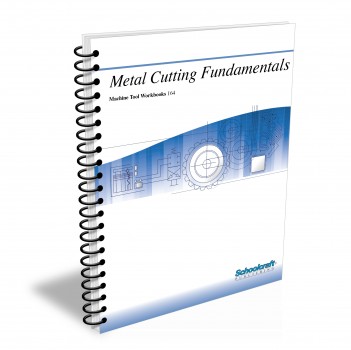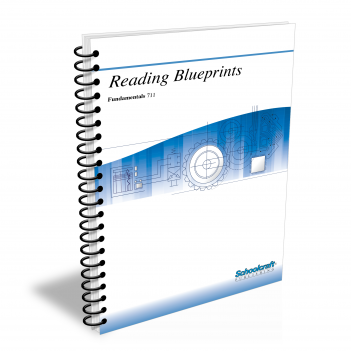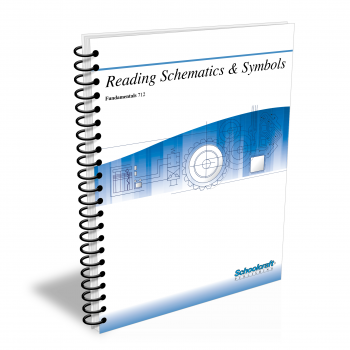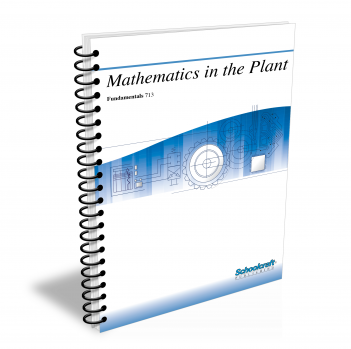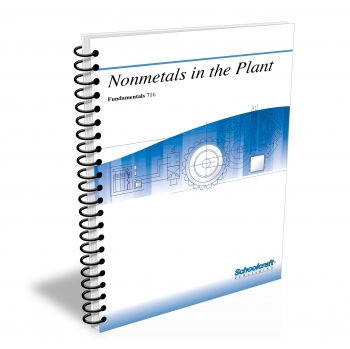Metals in the Plant
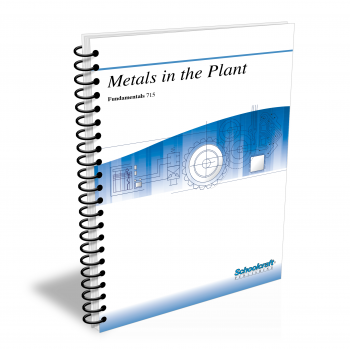
Course Number: 715
The first six chapters of the Metals in the Plant textbook focuses on the two most important commercial metals-iron and steel. Their origins, properties, and uses are described and shown in illustrations. The end of the textbook provides an overview of eight other important metals, their properties and uses, ranging from copper and aluminum to tin and zinc. In its entirety, this textbook provides a thorough overview of the principal metals in commercial use.
Does your curriculum require additional topics not included in this textbook? Build a customized version of the Metals in the Plant textbook below.
This textbook has been recently updated
to include topics lists, objectives, & key terms for every chapter.
Recommended Contact Hours – 15
Preview a Chapter
Available Supporting Material
- Table of Contents
- Exam Copies
- Suggested Titles
Table of Contents
Chapter 1: Introduction to Metals
Topics: Metals and metallurgy; Alloys; Internal structure of metals; Casting; Metalworking; Joining metals
Learning Objectives:
- Name five metals or alloys commonly used in industry.
- Name five mechanical properties of metals.
- Describe the uses of three metal alloys.
- Describe the metalworking processes of casting, forming, and machining.
Chapter 2: Properties of Metals
Topics: Hardness; Ductility; Malleability; Toughness; Tensile strength; Stresses; Elasticity; Strain; Metal fatigue; Thermal expansion; Density
Learning Objectives:
- State the definitions of four mechanical properties of metals.
- Describe the three kinds of stress.
- List the ways in which a metal can fail.
- State the definition of elasticity.
- Demonstrate how to calculate the density of metal.
Chapter 3: Manufacturing Processes
Topics: Forging; Extrusion; Powder and sheet metal forming; Wire drawing
Learning Objectives:
- Name four kinds of molds used in casting.
- List the steps in making a sand mold.
- Describe the differences between hot-chamber and cold-chamber die casting.
- Describe extrusion.
- List the steps involved in making a part by powder metallurgy.
Chapter 4: Iron and Steel
Topics: Iron ore; Pig iron; Smelting; Cast, gray cast, white cast, malleable cast, ductile cast, and high-alloy cast iron; Steel
Learning Objectives:
- Name the commercial grades of cast iron.
- List the important mechanical properties of commercial grades of cast iron.
- Describe the forms in which carbon appears in commercial grades of cast iron.
- Describe the process of smelting.
Chapter 5: Standard Steels
Topics: Carbon in steels; Steel rolling, coding, and classification; Spark testing; Plate, strip, sheet steel; Structural steel; Alloy and stainless steel
Learning Objectives:
- State the definition of steel.
- Name the method by which a steel was made, based on its AISI code.
- Demonstrate how to conduct a spark test.
- Identify steel sheets having as-rolled edges and cut edges.
- Describe two differences between alloy steels and steels containing only iron and carbon.
Chapter 6: Heat Treatment
Topics: Welding; Repairing tools and machines; Castings; Forgings; Carbon content of steels; Science of heat treatment
Learning Objectives:
- Describe the two basic processes, and state the four major purposes, of heat treatment.
- Explain why distortion and cracking occur during welding.
- Explain how to anneal, harden, and temper a star drill.
- State the definitions of low-carbon, medium-carbon, and high-carbon steels.
Chapter 7: Copper
Topics: Production; Alloys; Machinability ratings; Electrical conductivity; Corrosion resistance; Annealing copper; Brasses; Bronzes; Casting
Learning Objectives:
- List the steps in producing copper from ore.
- List the contents of brass, Muntz metal, admiralty brass, bronze, nickel silver, aluminum bronze, and cupro-nickel.
- Describe dezincification in brass.
- Name the three groups of brasses, based on their zinc content, and the three categories of hardness.
- List the contents of red brass, and describe its uses.
Chapter 8: Aluminum
Topics: Properties and production; Alloys; Grades; Forming processes; Anodizing; Welding; Brazing and soldering; Safety
Learning Objectives:
- List advantages and disadvantages of the oxide coating on aluminum.
- State the definition of wrought-grade and casting-grade aluminums.
- Describe the advantages of aluminum-silicon alloys.
- Describe how aluminum is anodized.
- Name the classifications of aluminum solders.
Chapter 9: Magnesium and Titanium
Topics: Producing, extracting, melting, refining, alloying, extruding, rolling, forging, machining, and joining magnesium; Uses for and processing of titanium
Learning Objectives:
- Name the alloys of magnesium and titanium.
- List the useful properties of magnesium and titanium.
- Describe how to join magnesium alloys.
- Describe the precautions that must be taken when working with magnesium and titanium.
- Describe the uses of magnesium and titanium in industry.
Chapter 10: Lead, Nickel, Tin, and Zinc
Topics: Lead properties, forms, and production; Nickel production and alloys; Tin properties, alloys, solder, babbit, and bronze; Zinc production and machining
Learning Objectives:
- Name the alloys of magnesium and titanium.
- List the useful properties of magnesium and titanium.
- Describe how to join magnesium alloys.
- Describe the precautions that must be taken when working with magnesium and titanium.
- Describe the uses of magnesium and titanium in industry.
Request Exam Copies
Exam Copies
Ready to see a copy of our textbooks? After selecting which textbooks you’d like to review for your course, you can submit your request by either logging in or creating an account so we know where to ship your exam copies. A representative from Schoolcraft will contact you to confirm and finish processing your request.
Exam copies are always free and yours to keep.
Selected Exam Copies
none selected
* Maximum of five copies can be ordered
